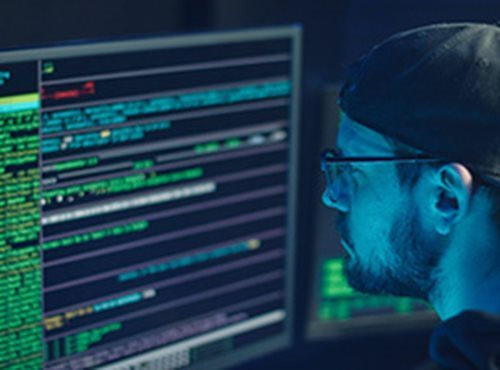The Complete Network Security Audit Checklist

No matter the size of your company, a network security audit is essential to keep your company safe and away from the hands of hackers. Whether you’re a large company or a small business, seeking cybersecurity services is an intelligent choice! This protects you from SPAM, malware, spyware, phishing or virus threats, all of which are veritably damaging and not to mention costly for your company.
It might be tempting to skip this step to save cost, but things will start to unravel in the long run. Your precious data will be exposed to cyberattacks that might ultimately end your business. In fact, cyberattacks are becoming more common amongst small and medium businesses as they tend to look over cybersecurity. Failing to do so can have devastating effects on your company. According to Inc. Magazine, a shocking 60% of small to medium businesses close down after being hit by a cyberattack.Years of hard work are gone in just a heartbeat. This is why running an IT security audit is paramount, it can save your company!
That’s why we’ve written a guide to everything you need to protect your company from threats. This is a complete checklist for a network security audit that you can always go back to, and this applies to big and small companies!
What is a network security audit?
Before we dive deep into the checklist, a network security audit examines or inspects any risks found within your network systems. This is to make sure that all potential security dangers are eliminated. Servers, routers, workstations, gateways are all checked to ensure the safety of all your sensitive information and keep them away from the wrong hands.
Another thing considered when running a software audit is the users. Whether intentionally or unintentionally, your users can also be the biggest threat to a network’s security as they are connected to the network.
Want the cybersecurity experts to look at your systems? Find out more about Lateral Software Security Audits.
What is the difference between cybersecurity and network security audits?
If you’re new to the world of cybersecurity and the terminologies, don’t worry!
Network security audits are essentially a subset of cybersecurity. Cybersecurity is concerned with overall security, and that includes physical data security. At the same time, network security audits focus on all the data on the network itself. This includes anything connected to the internet and what a user does on the network.
Network Security Audit Checklist
1. General
Establish policies and rules
- Acceptable Use Policy
- Internet Access Policy
- Email and Communications Policy
- Network Security Policy
- Remote Access Policy
- Encryption Policy
- Privacy Policy
Security and password training
For users and authorised users regarding using the Network Environment, sharing data outside the company, and understanding the risk of irresponsibly using passwords.
Securing your passwords
Always keep your password requirements documentation in a safe place.
Contingency plan
Have a plan ready for if and or when there is a data breach or security breach.
2. Wireless networking and remote access
- Remove the unnecessary services, applications, and files from the server.
- Implement two-factor authentication such as tokens, smart cards, certificates, or SMS solutions to strengthen your network security.
- Review your remote access audit logs and check for any unusual login patterns, such as logons in the middle of the night.
- Limit remote administration by disabling where it isn’t needed, such as guest accounts. Most importantly, create extra-strong passwords and implement Remote Access Security policies such as strong account lockout policies.
- Use the strongest encryption type to ensure your wireless network security is properly configured.
- Conduct malware scanning of all content such as file downloads, streaming media, or simply scripts contained in web pages.
- Strengthen internet security by utilising filters to protect your users and business from malicious websites. This prevents ransomware which is one of the most devastating types of cyberattacks right now.
3. Deploying workstations
- Install an Antivirus Software and ensure you are regularly updating the software. Also, have a 100% coverage of all workstations.
- Secure all computers by enabling screen locks and requiring passwords to access the computer.
- Conduct patching and make sure all workstations are fully up-to-date before deploying. Ensure that your patch management system is updating all workstations.
- Ensure all workstations are domain joined to easily administer them with unique credentials.
- Have a backup in place and regularly perform backups of your workstations or consider folder redirection or internet-based backups to secure critical user data.
4. Network equipment security
- Have a standard network configuration for each type of device and configure audit logs to monitor access.
- Update firmware and ensure that upgrades are regularly occurring.
- Use VLANs to segregate traffic types, like workstations, servers, out of band management, backups, etc.
- Have a network hardware list similar to your server list. Include device name and type, location, serial number, service tag, and responsible party.
5. Firewall security
- Utilise a firewall and ensure that all public-facing services are on a separate network segment or DMZ (email, FTP, web, for example) for intrusion prevention.
- Configure firewall policies to deny any inbound access to unused ports.
- Ensure regular updates of the router, firewall software and firewall firmware.
Who can perform a network security audit for my company?
Here at Lateral, we have a critical eye for quality and security. With over 30 years of having a strong history in the Health, Education, and Agritech industries, we understand the importance of cybersecurity services.
Our strong team of experts and analysts are among the best in developing and refining quality software and apps. And with the ever-changing threats to business software security, a Lateral Security Audit (LSA) provides in-depth insights into any possible security risks your company has. This saves you time and cost from recovering from any cyberattack.
Modern businesses rely on having secure software, so investing in network security audits is essential. Conducting a data security audit with Lateral lets your business and your software stay secure and fully updated with the latest industry practices and standards.
Want to make sure you’re protected? Get your software security audit done by a professional. Get in touch with our team today to find out more.



